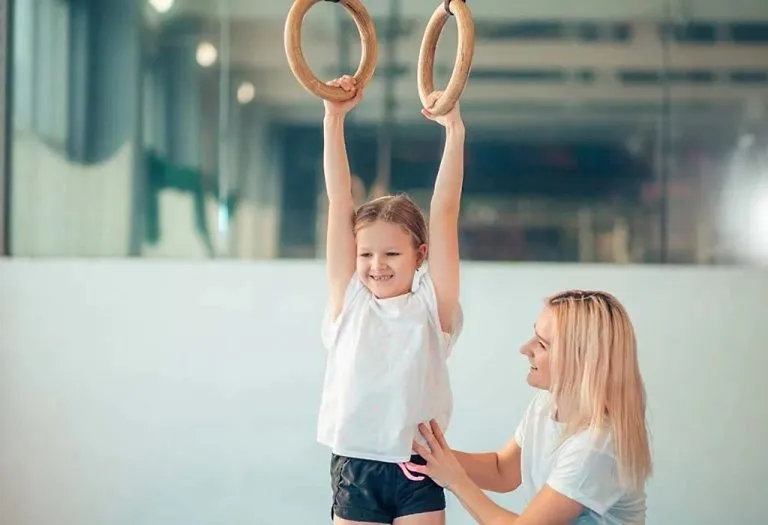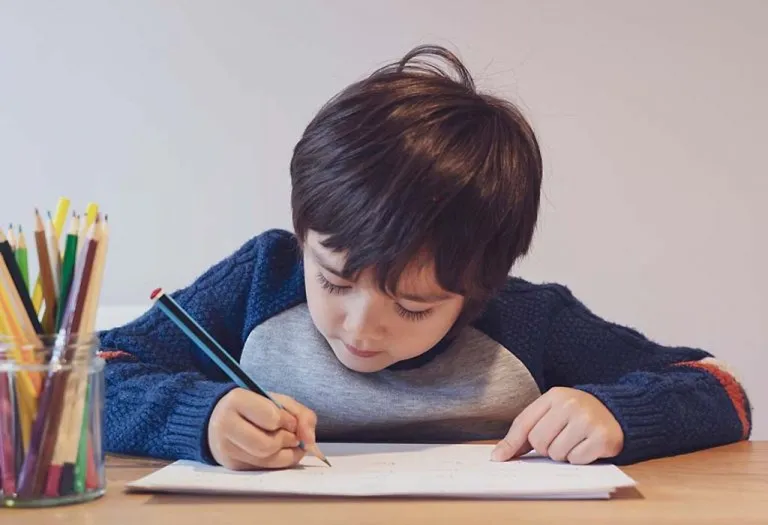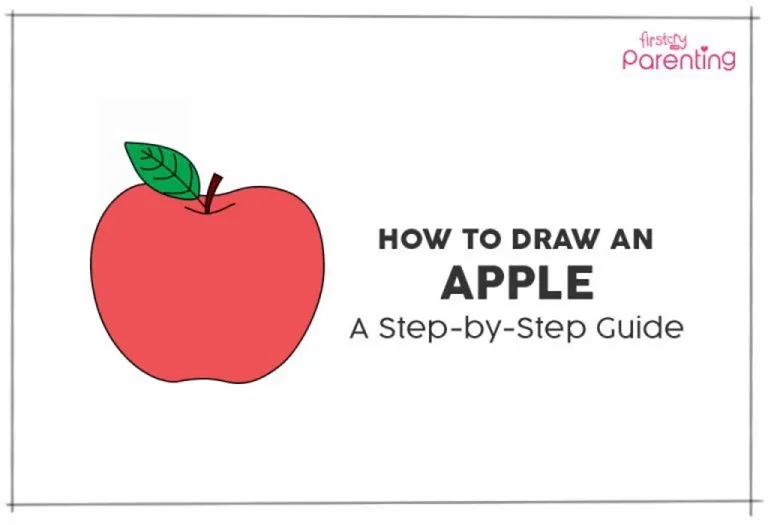Gymnastics for Kids – Benefits, Risks, and Activities
- What is Gymnastics?
- Benefits of Gymnastics for Children
- When Should a Child Start Gymnastics?
- Are There any Drawbacks or Cons of Gymnastics?
- Gymnastic Games and Activities for Children
- Precautionary Measures for Parents to Ensure Your Child’s Safety
- FAQs
If you think gymnastics is only suitable for professional athletes and not for children, you are probably wrong. Kids can benefit significantly by practicing gymnastics, whether they make it to the big league or not. Organized sports offer children an excellent opportunity for physical, mental, and social development, and gymnastics is one such artistic sport that can help your child in many ways.
Participating in gymnastics fosters not only physical strength but also flexibility, balance, and coordination. Moreover, it instills discipline, perseverance, and self-confidence in young athletes. So, don’t underestimate the transformative power of gymnastics for kids—it’s more than just flips and somersaults; it’s a journey of personal growth and development.
What is Gymnastics?
Gymnastics is an all-encompassing exercise program that incorporates strength, speed, power, coordination, flexibility, and balance. It is a demanding sport that requires immense perseverance and skills. Although it is advisable to start early, many children start in their teens and continue through college. The disciplinary influence of gymnastics extends beyond the gym and into the lifestyle of children.
Benefits of Gymnastics for Children
There are plenty of benefits of gymnastics for toddlers and for parents wondering if gymnastics is good for my child; here is a list that will tell you the benefits of gymnastics for children:
1. Good for Health
Regular participation in gymnastics has health benefits for children of all ages. With regular practice, children develop excellent physical coordination and maintain good health which in the long run prevents heart disease and even age-related issues such as bone loss.
2. Lays Down a Foundation for Athletics
The rigorous training of gymnastics focuses on all aspects of sports from physical to psychological. It builds strength and flexibility on the physical levels and contributes to mental toughness which is a must-have in athletics.
3. Builds Excellent Coordination of Mind and Body
The benefits of gymnastics for preschoolers are that it helps build robust spatial awareness. Unlike non-gymnasts, children who are into gymnastics aren’t as startled by a sudden imbalance in any activity they are involved in. They are also able to apply these acquired reflexes during difficult situations in everyday life.
4. Develops Sportsmanship
Although gymnastics is an individual sport, it involves a group learning environment. It develops sportsmanship and positive relationship in children as they cheer for their peers and learn about healthy competition. It also helps them hone their social skills by interacting with adults and other children who are at different levels of proficiency.
5. Builds Discipline
Discipline is everything in gymnastics. Children will have to put work into physical movements every week or every day to perform certain feats. In this process, they learn the importance of focus, dedication, and hard work.
6. Builds Confidence
The sense of accomplishment gained from mastering physical feats goes a long way in building confidence and a sense of self-esteem in children. As they advance, they learn to tackle more significant challenges methodically and achieve their goals. Children also learn to face their fears and talk openly about it to the coach to find a way to overcome it.
7. Helps Them Set Goals
Athletic ability cannot be built overnight; it requires dedicated efforts to fine-tune the mind and the body. This means learning to set goals and working continuously to achieve them. In the process, children learn how to manage stress and stay calm under pressure.
8. Gymnastics is Fun
All kids naturally love activities that involve swinging, tumbling, jumps, flips, and momentary free-fall. Not many activities are this exhilarating and children are drawn to it. Regular classes also keep their spirits high by releasing endorphins or the happy chemicals in their brains. Gymnastics for an autistic child is a great way to get these children out to play and socialise.
9. Enhances Cognitive Skills
Beyond the physical benefits, gymnastics also stimulates cognitive development in children. The intricate movements and sequences involved in gymnastics routines require concentration, memory, and problem-solving skills. Through consistent practice, children enhance their cognitive abilities, which can positively impact their academic performance and overall cognitive development.
10. Promotes Emotional Well-being
Engaging in gymnastics provides children with a constructive outlet for managing emotions and reducing stress. The physical activity involved releases endorphins, which are natural mood lifters, promoting feelings of happiness and reducing anxiety. Additionally, the supportive environment of gymnastics fosters emotional resilience, teaching children how to cope with setbacks and challenges positively. This emotional resilience translates into greater overall well-being and mental health.
When Should a Child Start Gymnastics?
Wondering what age to start gymnastics? There are no hard and fast rules with regards to the right age to start gymnastics. Even gyms do not have rigid age limits. Some have classes for children as young as 18 months, and some start from 8 or 12 years.
Are There any Drawbacks or Cons of Gymnastics?
Although gymnastics is highly beneficial, like all demanding sports, it comes with its drawbacks. Some of the cons of this sport include:
1. Injuries
Gymnastics due to the nature of the physical routines involved has the highest rate of injuries among all the sports played by kids.
2. Affects them Emotionally
High expectation from parents, coaches, or peer pressure can take an emotional toll on children when they are unable to reach the advanced motor skills needed even before they are ready for it. When they are not able to live up to their expectation, they could feel frustrated and left behind.
3. Change of Goals
When high-level sports become a way of life, children miss out on a healthy childhood which involves many other aspects. Paediatricians say that children who are into high-level sports have less childhood-oriented goals and more adult goals which can interfere with their personalities.
Gymnastic Games and Activities for Children
Gymnastic skills are built on top of activities of an ascending level of difficulty. Here are some great activities for kids to start with:
1. Obstacle Trail
This is a perfect warm-up game for kids in the gymnastics class.
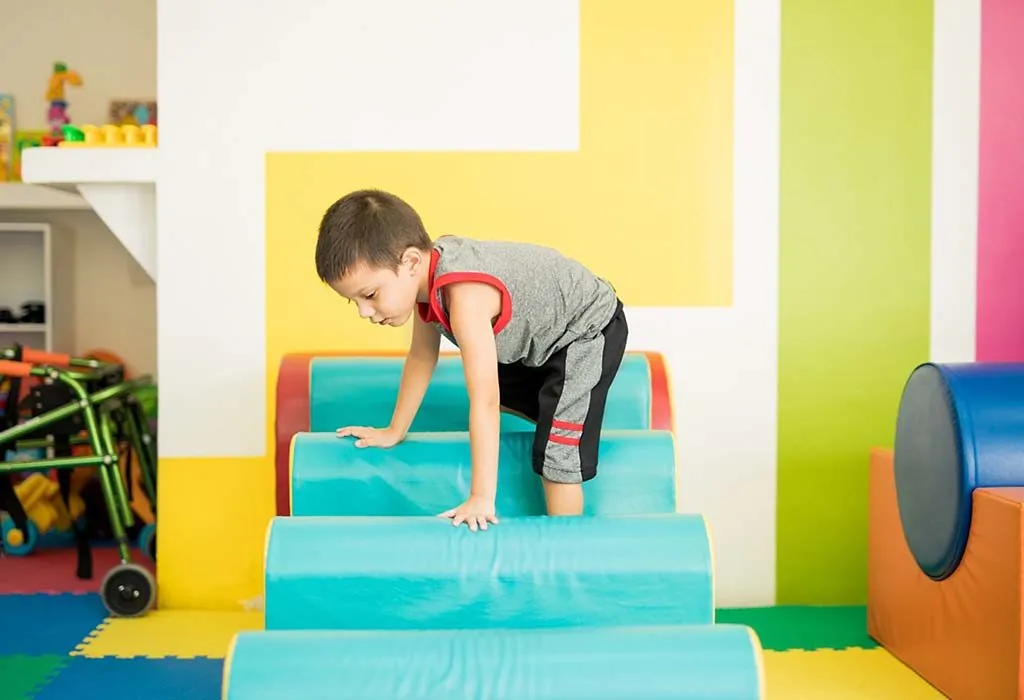
You Will Require
- Wedge mat station
- Bridge station
- Handstand station
How To
- Set up multiple stations around the gym. For example, you can place a wedge mat station at the beginning followed by a tumble station. The gymnasts start their warm-up routine with front or back rolls followed by tumbles.
- The tumble station can be followed by handstand and bridge stations. Add more stations as per the requirement.
- Divide the class into two teams. They need to complete all the stations in order the order they are set up.
2. The Talent Routine
This is a fun-filled activity to promote teamwork and creativity. It also helps in conditioning, which is an exercise routine for strengthening the arm, leg, and core muscles to increase flexibility.
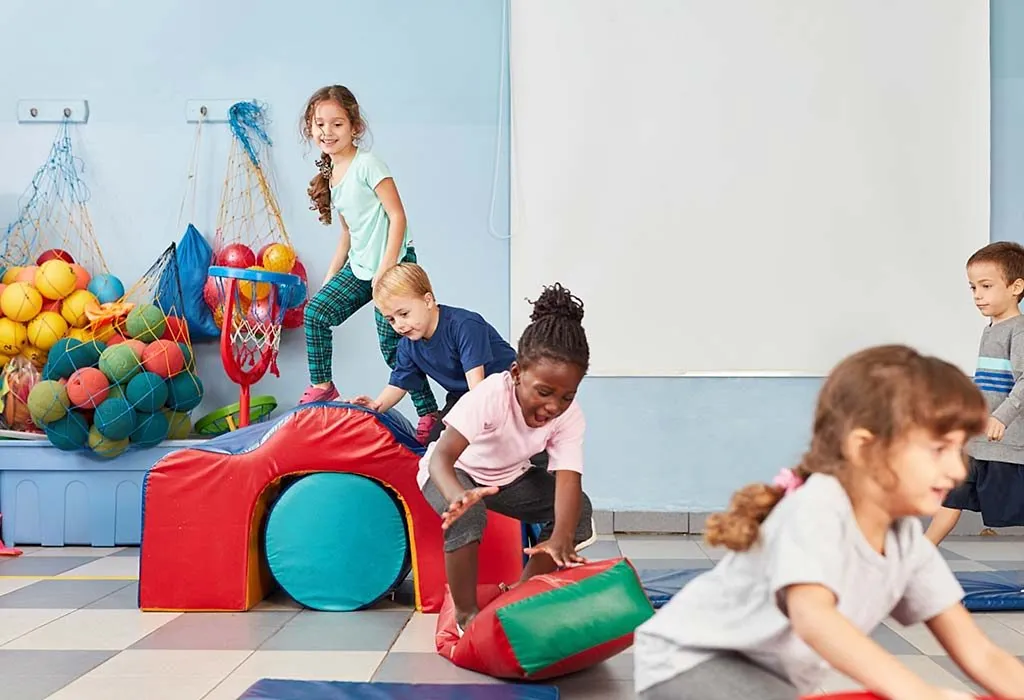
You Will Require
- Hula-hoop
- Vault horse
- Mats
- Balance beam
- Music player
How To
- Divide the class into five teams and assign the following activities to each team
- In a hurling position, jump over the mat
- Hopscotch through a series of hula-hoops
- Jump on and off the vaulting horse
- Crawl through an obstacle course
- Jump over to the sides of a balance beam
- You have to play upbeat music as the gymnasts perform the skills. When you pause the music, they have to freeze in their position.
- After every freeze, the gymnasts have to exchange their position with the person on the left, and the game starts again.
3. The Pretend, But for a Purpose Routine
Exercises do not need to be boring. Throwing in a little creativity makes it fun.
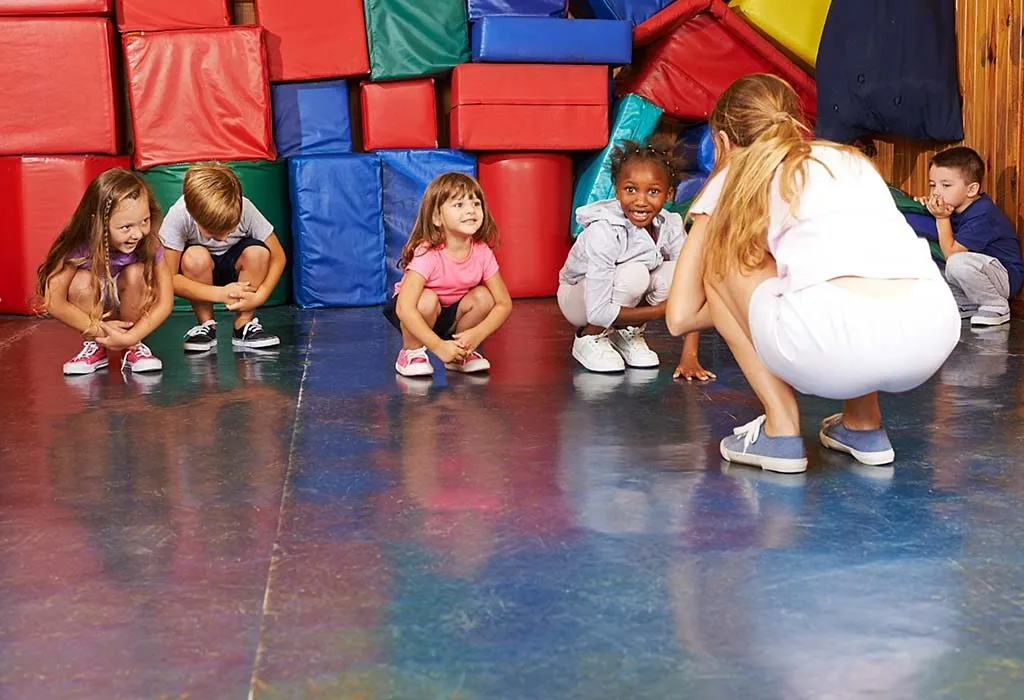
You Will Require
- No materials needed
How To
- The little gymnasts can choose to pretend as an animal. Say if all the kids choose to be a kangaroo then they will have to jump around the gym as an exercise. This exercise will make their legs stronger and increase their endurance levels.
- Similarly, if a gymnast chooses to be a frog, he will have to hop around like a frog on all fours. This will build overall muscular strength and endurance.
4. Island Tag
This game is excellent to improve agility and build strength in the hips, knees and ankles.
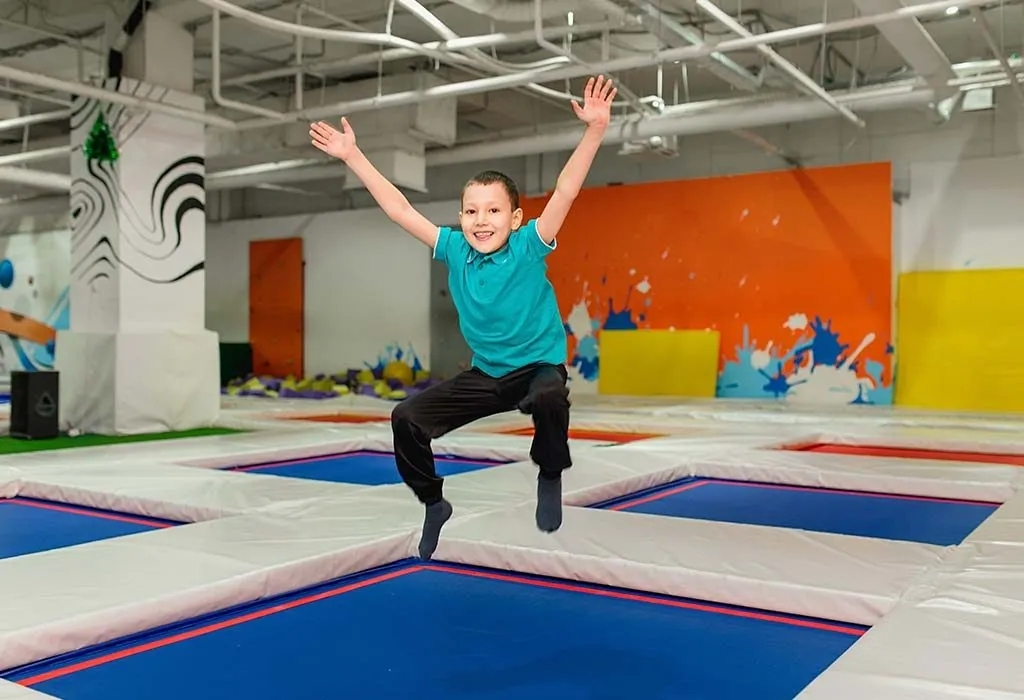
You Will Require
- Wedge mat
- panel mats
- Balance beam
- Foam Mat
How To
- Spread out all the mats and balance beams on the floor. The floor is water and the equipment spread out is islands.
- The young gymnasts will jump from island-to-island while playing tag. Whoever falls into the water is out.
- The gymnasts who got out will spend time doing conditioning exercises until the round is over.
- Keep the rounds short and often change the ‘It’ of the game.
5. Balance Challenge
This activity focuses on improving balance and stability, essential skills for gymnasts.
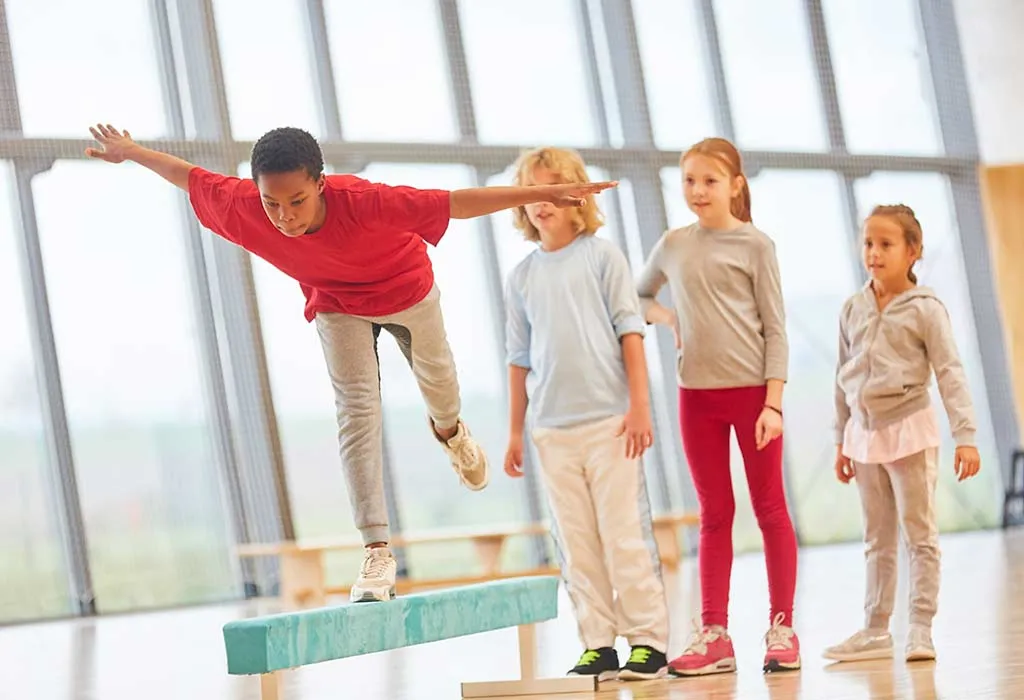
You will Require
- Balance beams
- Cones or markers
How To
- Set up balance beams in a row across the gym floor, leaving enough space between each beam.
- Place cones or markers at various intervals along the beams to serve as checkpoints.
- Divide the class into pairs or small groups.
- Each group takes turns walking across the balance beams, trying to reach as many checkpoints as possible without falling off.
- To add challenge, incorporate different walking techniques such as walking backward, sideways, or on tiptoes.
- Encourage teamwork and support among participants as they navigate the beams.
6. Flexibility Relay
This game aims to enhance flexibility while adding an element of friendly competition.
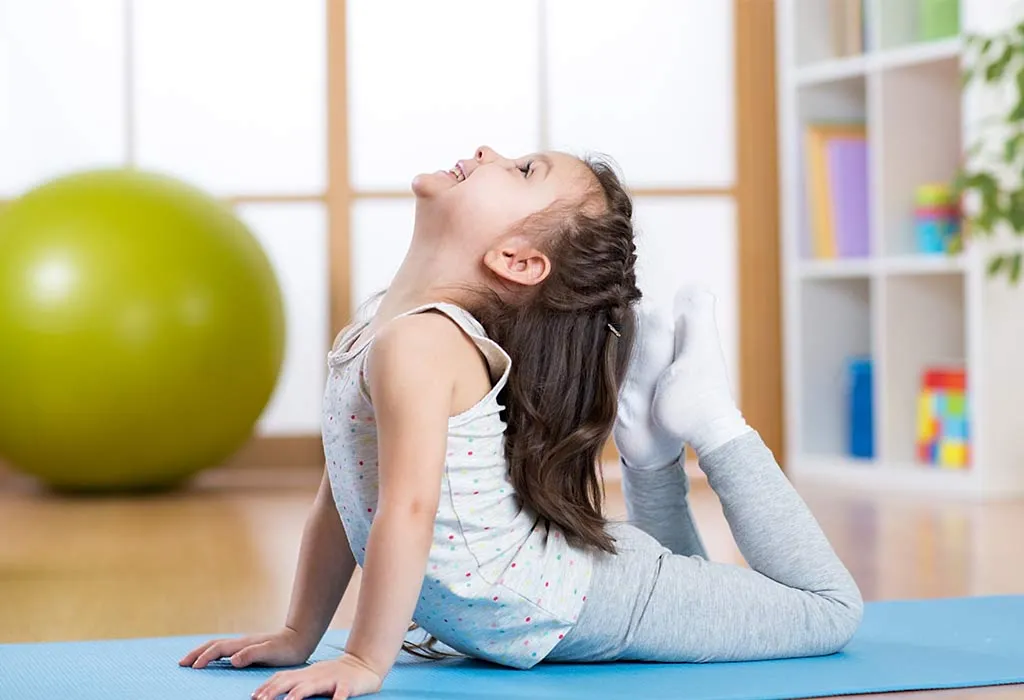
You Will Require
- Stretching mats
- Timer
- Stopwatch or timer
How To
- Divide the class into teams, with each team lining up behind a stretching mat.
- At the start signal, the first player from each team performs a stretching exercise, such as a forward bend or splits, for a set amount of time.
- After completing the stretch, the player runs to a designated point and back to tag the next teammate.
- The next player repeats the stretching exercise and relay run.
- Continue the relay until all players have completed the circuit.
- The team that finishes first or completes the most rounds within a time limit wins.
- Emphasize proper stretching techniques to prevent injury and improve flexibility effectively.
Precautionary Measures for Parents to Ensure Your Child’s Safety
These are some tips to remember before you get your child into gymnastics:
- Make sure that gymnastics is right for your child. Not all body types are suitable for this demanding activity. If your child has recurring injuries, it’s a sign that he is not suited for it.
- Find a good coach. A trainer who is certified and knowledgeable can make all the difference to your child’s training.
- Protect his back. Many movements in gymnastics involve flexion of the backbone. Exercises that focus on core strength will keep his back safe.
- Ensure that your baby learns the basics of gymnastics before attempting any challenging feats. In the event of an injury, do not cut short the rehab. Allow the body to recover fully before getting back in the game.
FAQs
1. Are there any risks associated with children participating in gymnastics?
While gymnastics can be highly beneficial, there are inherent risks involved, including the potential for injuries such as sprains, strains, fractures, and overuse injuries. Proper supervision, training, and adherence to safety guidelines are crucial to mitigate these risks.
2. At what age can children start participating in gymnastics?
Many gymnastics programs offer classes for children as young as toddlers, typically starting around 18 months to 2 years old. However, the appropriate age to start may vary depending on the child’s physical development and maturity level.
3. How can parents support their child’s involvement in gymnastics?
Parents can support their child’s gymnastics journey by ensuring they have access to quality coaching and facilities, encouraging a positive attitude towards practice and competition, providing proper nutrition and hydration, and actively engaging in their child’s progress and experiences within the sport.
This was all about kids gymnastics. Gymnastics for 5, 6 and 7-year-olds and even younger is a wonderful sport to get them into a strong physical and mental form.
References/Resources:
1. Benefits of Gymnastics; Gymnastics Victoria; https://vic.gymnastics.org.au/content/benefits-of-gymnastics
2. Safety Tips: Gymnastics; Nemours Teens Health; https://kidshealth.org/en/teens/safety-gymnastics.html
3. Sember. V; Benefits of gymnastics as physical activity on cognitive functioning and health; Research Gate; https://www.researchgate.net/publication/343381422_Benefits_of_gymnastics_as_physical_activity_on_cognitive_functioning_and_health
4. Sheerin. K, Williams. S, Hume. P, Whatman. C; Effects of gymnastics training on physical function in children; Research Gate; https://www.researchgate.net/publication/283517447_Effects_of_gymnastics_training_on_physical_function_in_children; January 2012
5. Busquets. A, Ferrer-Uris. B, Angulo-Barroso. R, Federolf. P; Gymnastics Experience Enhances the Development of Bipedal-Stance Multi-Segmental Coordination and Control During Proprioceptive Reweighting (Frontiers in Psychology); National Library of Medicine; https://www.ncbi.nlm.nih.gov/pmc/articles/PMC8081832/; April 2021
6. Root. H, Marshall. A, Thatcher. A, Valier. A, et. al.; Sport Specialization and Fitness and Functional Task Performance Among Youth Competitive Gymnasts (Journal of Athletic Training); National Library of Medicine; https://www.ncbi.nlm.nih.gov/pmc/articles/PMC6805067/; October 2019
7. Uusi-Rasi. K, Karinkanta. S, Kannus. P, Tokola. K, Sievänen. H; Does long-term recreational gymnastics prevent injurious falls in older women? A prospective 20-year follow-up; BMC Geriatrics; https://bmcgeriatr.biomedcentral.com/articles/10.1186/s12877-020-1428-0; February 2020
Also Read:
Scavenger Hunt for Kids
Easy to Do Stretches for Kids
Best Brain Gym Exercises for Children
Should You Choose Gym Childcare for Your Kids?
Was This Article Helpful?
Parenting is a huge responsibility, for you as a caregiver, but also for us as a parenting content platform. We understand that and take our responsibility of creating credible content seriously. FirstCry Parenting articles are written and published only after extensive research using factually sound references to deliver quality content that is accurate, validated by experts, and completely reliable. To understand how we go about creating content that is credible, read our editorial policy here.






